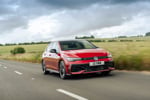A few months ago, Conservative environment spokesman John Selwyn Gummer (the one who force-fed his child a beefburger during the BSE crisis) complained on Radio 4 about drivers buying, “gas-guzzling, turbocharged cars”.
That’s a bit like complaining about cars “fitted with dangerous ABS brakes”.
Well John, you should be really worried now, because 2009 is likely to see a small landmark in the development of the internal combustion engine: more than half the cars sold in the UK will be fitted with a turbo by the end of next year.
That is partly because you can no longer buy a diesel car with a normally aspirated eng-ine, and also because of a quiet revolution in petrol engine design.
It is universally acknowledged that replacing a petrol engine of a given size with a smaller turbocharged one of the same power will improve fuel consumption and CO2 performance.
As an example of how quickly the trend is moving, BMW, who refused to make turbocharged petrol engines in the 1990s, will not sell a single normally-aspirated 7 Series next year.
As well as the turbodiesels, both petrol engines are turbocharged: the new 740 has a 3.0-litre turbo and the 750i has 4.4-litre turbo.
Volkswagen has already downsized its 2.0-litre petrol to the 1.4 TFSI engine, Fiat is concentrating on its 1.4 T-Jet and Ford has recently said that it is to produce a 1.6-litre petrol turbo that will presumably replace the 1.8 and 2.0-litre normally aspirated engines.
The whole idea of measuring an engine by its capacity will soon be outdated. On the launch of the 7 Series, the press pack had every detail of the engine in an easy-to-read table – except the actual size. BMW says the badging reflects the performance, not the capacity, and the 740i’s 326bhp certainly sounds like the sort of output you would expect from a 4.0-litre engine.
Twenty years ago, the height of one-upmanship in the company car park was to have the 2.0 badge on the boot rather than the 1.8. Indeed, one French importer went so far as to video a BBC programme about company car snobbery and send it to Paris together with a plea to make the 2.0 engine badge bigger.
In future, car companies hope that engines will follow laptops, where bragging rights are all about being smaller and lighter.
There will certainly need to be a change in attitude: the idea that size doesn’t matter when it comes to car engines overturns decades of prejudice.













Login to comment
Comments
No comments have been made yet.